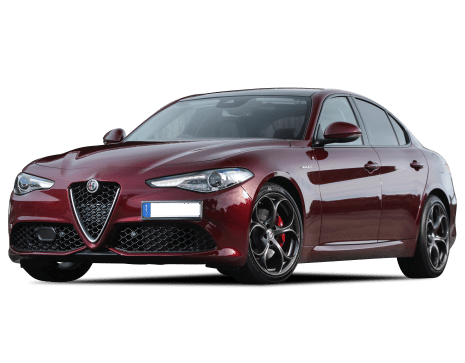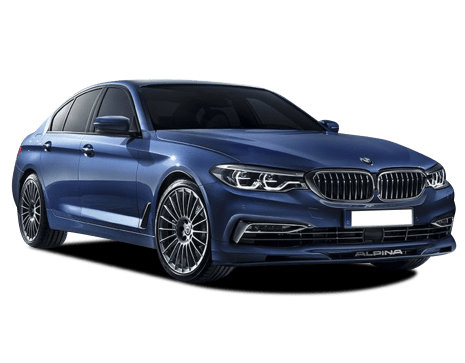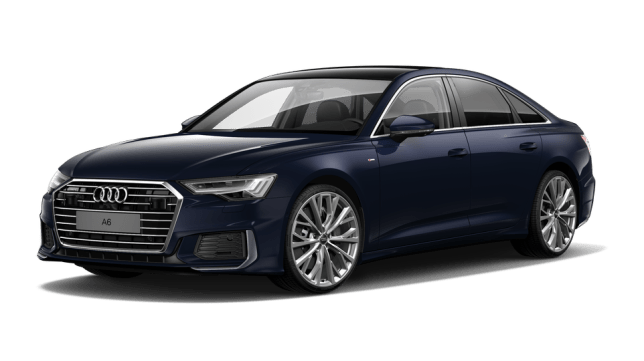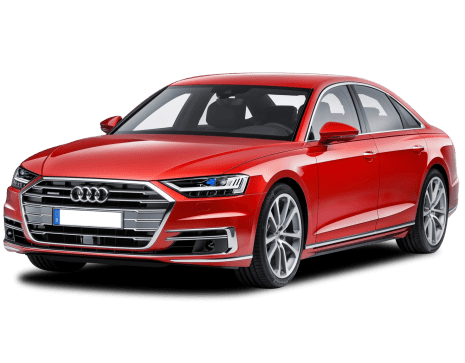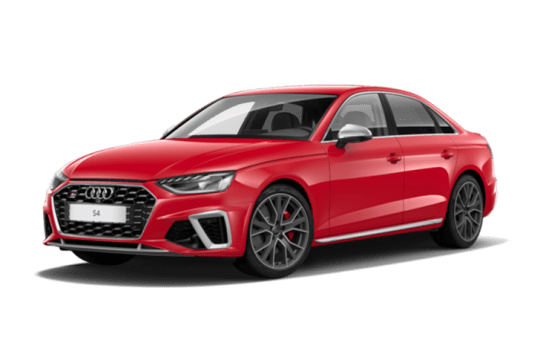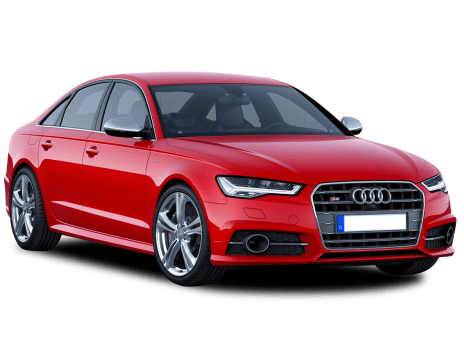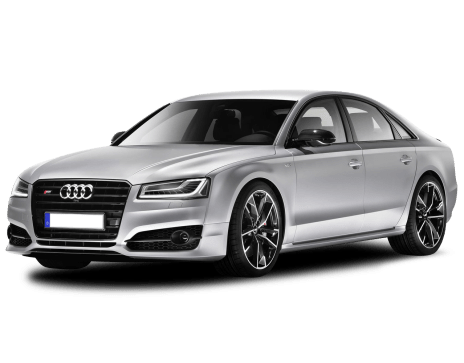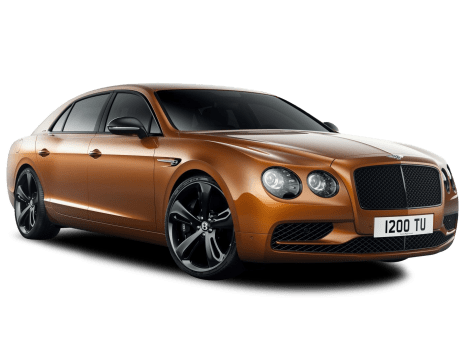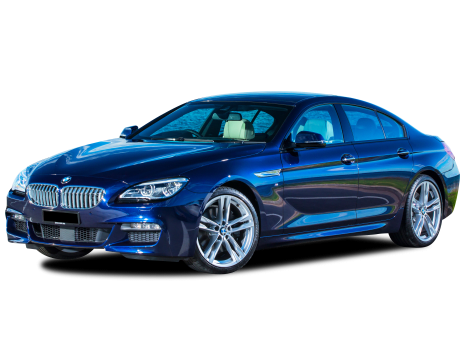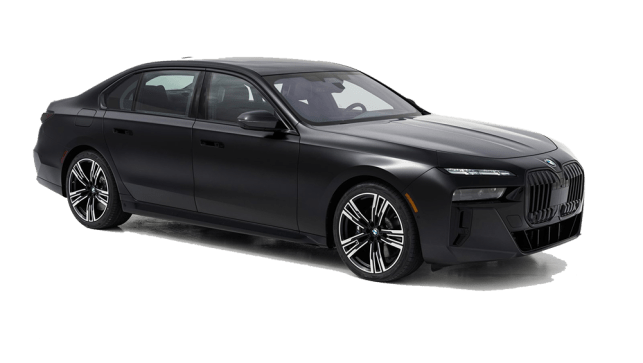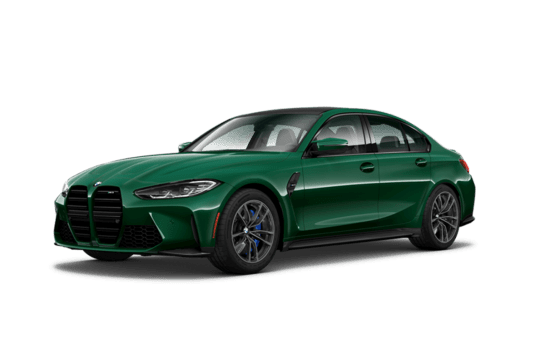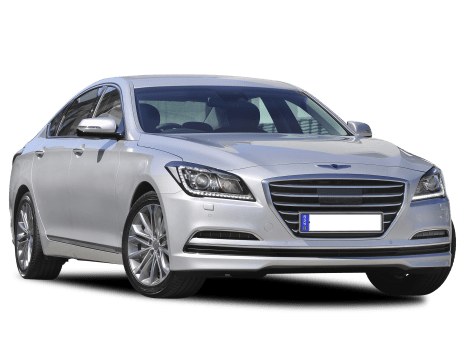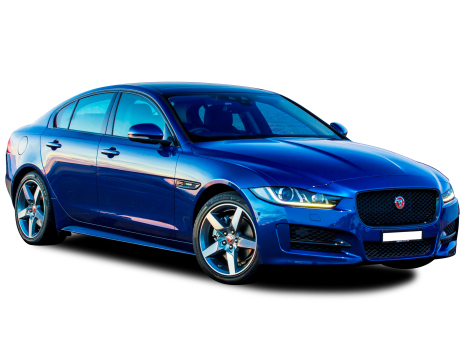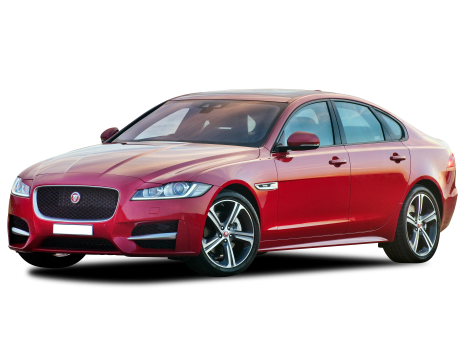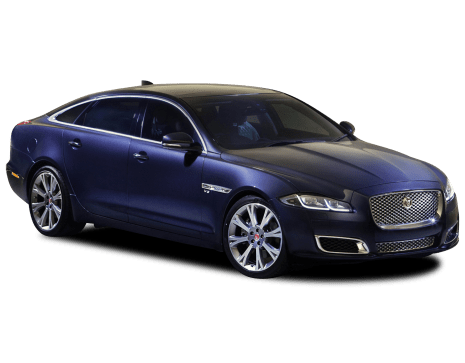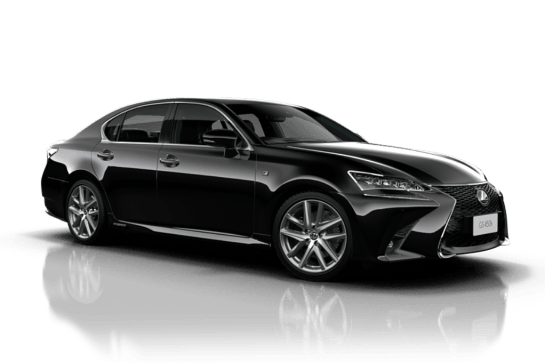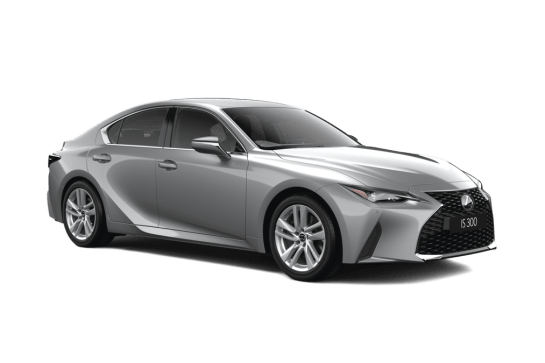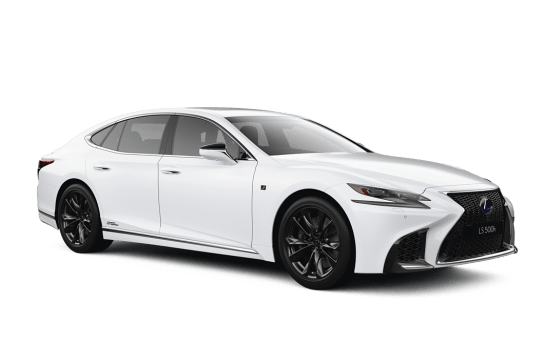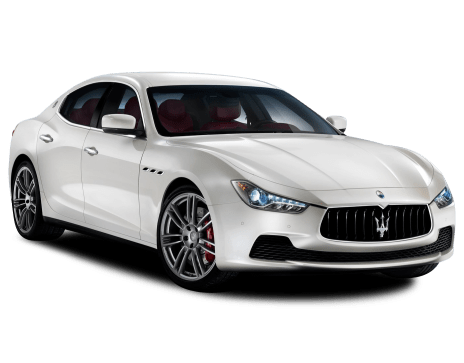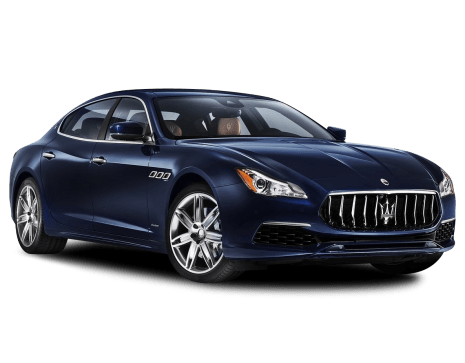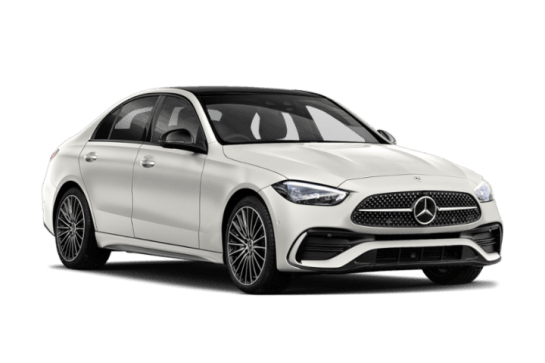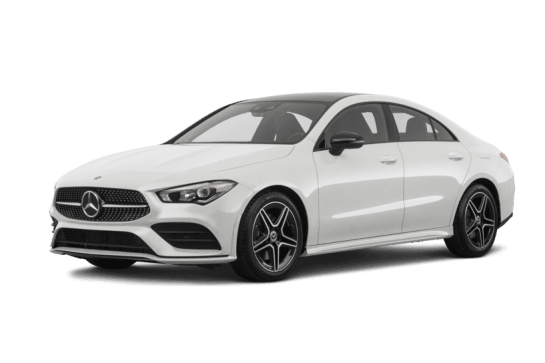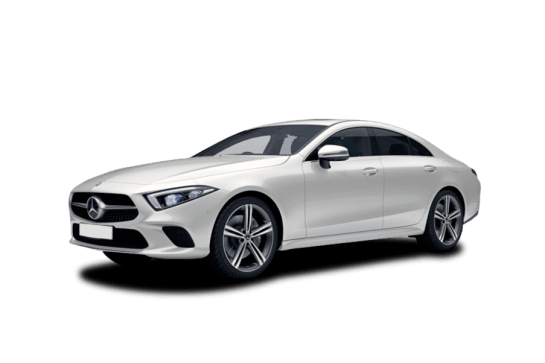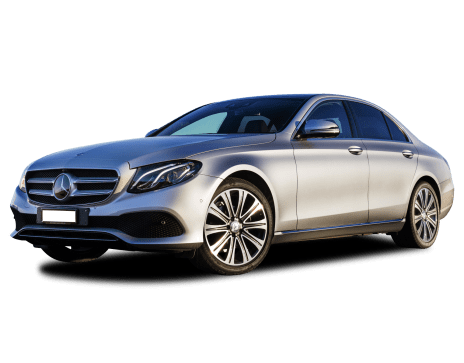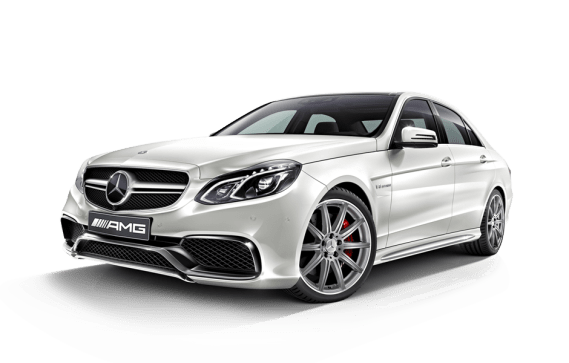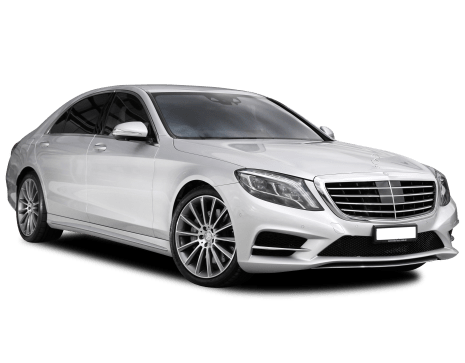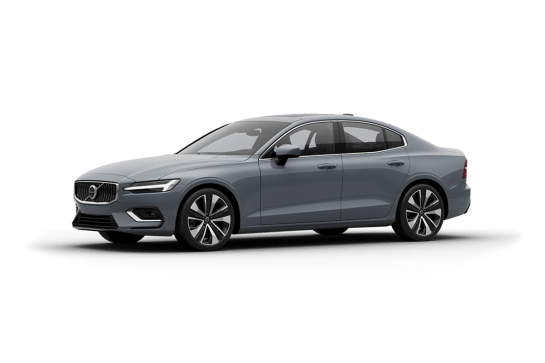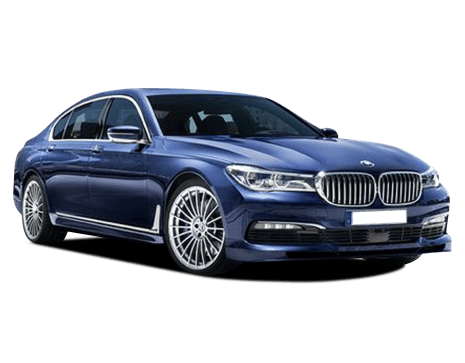
BMW Alpina B7 VS Alfa Romeo Giulia
BMW Alpina B7
Likes
- Supremely comfortable ride
- Luxurious cabin
- Supercar-scaring 330km/h top speed
Dislikes
- Exhaust note could be tougher sounding
- Extra care needed to pilot through car parks and alley ways
- Australia's speed limits
Alfa Romeo Giulia
Likes
- It’s not German
- Improved in-cabin feel
- Better value than before
Dislikes
- Fiddly multimedia software
- Limited in-cabin storage solutions
- Only three-year warranty
Summary
BMW Alpina B7
You know when you're walking along the footpath and you come to a soft spongey bit that the council have put in around a tree and your mind goes: "Whoah, the ground is bouncy but it looks just like bitumen?!"
Well that's the kind of response you'll get from people when they think they're looking at a regular BMW 7 Series, only to have their world go a bit bouncy when they see the Alpina B7 badge on the back of this car as you're overtaking them at Warp Factor 9000.
And you will be overtaking them like a blur because, thanks to the elves at German tuning house Alpina, the B7 is hugely fast for a five-seat, 5.3m-long, 2.2 tonne limo. But then the B7 is fast for any type of car of any dimensions, because with its 330km/h top speed this beast will outrun a McLaren 570GT. Yes, seriously.
Based on the BMW 750Li long wheelbase, the B7 begins life rolling down the same production line as a regular 7 Series. Alpina then goes on to make so many changes to the engine and chassis that the German government requires the BMW VIN to be replaced with a new one.
Ready to find out more? Well there's so much to see here that things may go a bit weird and bouncy again. Be prepared.
| Safety rating | |
|---|---|
| Engine Type | 4.4L turbo |
| Fuel Type | Premium Unleaded Petrol |
| Fuel Efficiency | 9.6L/100km |
| Seating | 5 seats |
Alfa Romeo Giulia
Alfa Romeo was poised to rock the established mid-size luxury sedan segment back in 2017 when it launched the Giulia, firing a direct salvo at the big Germans.
Combining drop-dead gorgeous looks with peppy performance was the name of the game for the Giulia, but after arriving with much hype and fanfare, Alfa Romeo doesn’t seem to have conquested as many sales as they had originally hoped.
So far this year, Alfa Romeo has sold just 142 Giulias, well behind the segment leading Mercedes C-Class, BMW 3 Series and Audi A4, but a new mid-life update hopes to revitalise interest in the Italian sedan.
The refreshed line-up brings in more standard equipment and sharper pricing, but has Alfa done enough to sway you out of a tried and trusted German sports sedan?
| Safety rating | |
|---|---|
| Engine Type | 2.9L turbo |
| Fuel Type | Premium Unleaded Petrol |
| Fuel Efficiency | 8.2L/100km |
| Seating | 5 seats |
Verdict
BMW Alpina B77.9/10
The BMW Alpina B7 is a special car destined (like all Alpinas) to be a collector's item, due to its rarity and exclusivity. I asked Alpina just how many current model B7s there are in Australia and the answer was "less than five", which is just as mysterious as most people find the car in general.
The B7 is fast – too fast to enjoy legally on Australian roads – but it is also supremely comfortable and well appointed. For Alpina fans lucky enough to be driven in on,e this would make for a truly rare and niche way to be chauffeured.
Is the BMW Alpina B7 the ultimate fast limousine? Tells us what you think in the comments section below.
Alfa Romeo Giulia7.9/10
This is the Giulia Alfa Romeo should have launched back in 2017.
Especially stacked up against its German rivals, the new Giulia is not only more attractive to the eye, but also the hip pocket.
The boost in standard equipment and safety gear is a huge boon for potential Alfa buyers, while no compromises are found in the Giulia’s fun-to-drive nature and peppy engine.
Its weakest aspect might be its average three-year warranty, but if you are looking for a new premium mid-size sedan that stands out from the crowd without any major concessions, the Giulia should be on your watch list.
Design
BMW Alpina B77/10
This is a good place to start because the B7 looks just like the 750Li it's based on, until you see the first tell-tale signs that it's not one.
There's the front wing with Alpina lettering and the boot-top spoiler, the graphics, which run the length of the car, and the 20-spoke wheels with Alpina badging.
This is late '70s, early '80s styling at its best (and possibly worst), but these special cars can pull off the irony-free look because this is how Alpina BMWs have rolled since 1975, when the E21 320-based Alpina A1/3 was launched.
BMW badges have been left on the bonnet and boot, but there's Alpina B7 BiTurbo lettering in place of the 7 Series identifier.
Most people walked by it in the street thinking it was just a big BMW, others scratched their heads wondering what I'd done to my big German limo and a handful almost dropped to their knees in praise and wonderment at spotting a rare beast like this in the wild.
These people all had their own Alpina stories – one was the third generation of an Alpina-owning family. You become a member a small and passionate club when you buy into this rarefied brand.
The standard B7's cabin is close to identical to the luxurious interior of the 750Li, save for Alpina-embossed stitching in the headrests of the soft, leather seats, the virtual instrument cluster and the Alpina plaque on the centre console denoting the build number.
The B7 is long, low and wide at just under 5.3m end to end, 1.5m tall and 1.9m across. A 3.2m wheelbase means cabin room is more than just spacious.
The B7 rolls off the Dingolfing production line in Germany and is then handed over to Alpina's facility in Buckle, where significant changes take place. Read on to find out how the B7 is different from a regular 750Li.
Alfa Romeo Giulia9/10
Park a brand-new 2020 Giulia next to its predecessor, and you’ll find they look identical from the outside.
It would be a bit unfair to call this update a ‘facelift’, but we’re glad Alfa Romeo hasn’t messed with the sharp styling of its Giulia sedan.
Having been on sale in Australia since early 2017, the Giulia doesn’t look like it has aged a day. In fact, we reckon it has gotten a bit better with age, especially in its top-spec Quadrifoglio trim.
With a triangular front grille and the number plate offset to side, the Giulia looks unique relative to anything else on the road, and we appreciate its distinctive styling.
The angular headlights also add to the Giulia’s aggressive and sporty stance, even in its base Sport trim, while the 19-inch wheels help fill the arches and give a sense of a more expensive car.
The handsome look continues to the rear, with the sculpted derriere looking taught and tight like a well-tailored pair of suit pants rather than some ill-fitting, off-the-shelf trousers.
However, we will point out the black plastic on the underside of the bumper on our base Giulia Sport, which looks a tad cheap with only a single exhaust outlet on the left, and a sea of… nothing.
Stepping up to the more expensive (and more potent) Veloce or Quadrifoglio remedies this however, with a proper diffuser and dual and quad outlets respectively.
The Giulia certainly stands out amongst the sea of Mercedes, BMW and Audi models in the executive sedan segment, and proves that doing your own thing can be hugely satisfying.
Combine the stylish exterior with more colour options – like the new 'Visconti Green' – and you can really make your Giulia pop, though we do wish our test car was finished in a more exciting hue.
With this Vesuvio Grey option, the Giulia blends in a bit too closely to the greys, blacks, whites and silvers you usually see on premium mid-size sedans, but all colours aside from white and red attract a $1355 premium.
Inside, much of the interior carries over as before, but Alfa Romeo has moved things a little more upmarket thanks to a few small touches that add up to a big difference.
The centre console area, while not being redesigned, has been given more of a premium makeover thanks to a carbon-fibre-like trim with aluminium and gloss-black highlights.
The shifter, especially, feels great thanks to the dimpled leather design, while other touch points such as the multimedia control, drive select and volume knobs also deliver a weightier, more substantial sensation.
Aside from that, the Giulia retains its premium cabin materials, soft-touch multi-function leather steering wheel and mixed material finish for an elegant and sophisticated interior worthy of a premium European model.
Our test car was kitted out with the standard black interior, but more adventurous buyers can opt for tan or red – the latter of which would definitely be our pick.
Practicality
BMW Alpina B78/10
The B7 is a five-seater limousine although with the fold-down rear centre armrest which houses the media control panel the back is really set up to carry two.
That 3.2m wheelbase means cabin space is enormous. At 191cm tall I can sit behind my driving position with about 30cm between my knees and the seatback. Those rear doors open wide and the entrance is huge, making entry and exit almost as easy as just walking through a doorway. The air suspension also rises and lowers the B7's ride height for better access.
Storage is excellent, with two cupholders and door pockets for rear passengers, along with the area inside the centre armrest.
Up front, the driver and co-pilot have a deep centre console storage bin with split-opening lid, two cupholders and door pockets.
Luggage space is good, with a 515-litre boot.
Alfa Romeo Giulia7/10
Measuring 4643mm long, 1860mm wide, 1436mm tall, and with a 2820mm wheelbase, the Giulia offers plenty of room for passengers, front and rear.
The sports front seats are an especially pleasant place to be; tight-hugging, well-bolstered and super supportive, meaning no fatigue even after extended driving trips.
Storage solutions though, are somewhat limited.
The door pockets won’t accommodate a bottle of any size thanks to the armrest design, while the two centre cupholders are positioned as such that a bottle will block climate controls.
A generous storage cubby can be found under the centre armrest though, and the wireless charger design lays your device almost vertically in a separate compartment so you won’t scratch your screen.
Glove box size is standard, but the owner’s manual does eat into room a little, while driver’s also have access to another small cubby to the right of the steering wheel.
At least Alfa now includes a handy key fob holder to the left of the shifter? Though this feature becomes redundant with keyless entry and push-button start meaning you more likely just to leave the keys in your pocket.
The rear seats offer plenty of head-, leg- and shoulder-space for passengers in the outboard seats, even when the front seat is set to my 183cm (6'0") frame, but the door pockets are, again, disappointingly small.
I fit adequately in the middle seat, but wouldn’t want to be there for any extended period of time due to the transmission tunnel eating into the footwell.
Rear passengers have access to a fold-down armrest with cupholders, dual air vents and a single USB port.
Opening the boot of the Giulia reveals enough space to swallow 480 litres, matching the 3 Series’ volume and outclassing the C-Class (425L) and A4 (460L).
This is enough for one large and one small suitcase, with a bit of room in the sides for smaller items, while four luggage tie-down points are located on the floor.
The boot also features latches to fold down the rear seats, but given they aren’t spring loaded, you still need to push them down with something long or walk around to the rear seats to flip them over.
Alfa Romeo has not revealed volume with the seats folded down, but we noticed the aperture into the cabin is noticeably narrow and quite shallow.
Price and features
BMW Alpina B77/10
The B7 lists for $389,955, while a 750li is about $319,000. At this level, $70K seems like a downright reasonable premium to pay for a faster, more powerful, better handling and comfier version of the 750Li.
In this case you're paying more but getting more, although standard features are close to identical. There's adaptive LED headlights, head-up display, night vision with pedestrian detection, a 10.25-inch touch screen up front and two screens in the second row for TV and other media functions.
There's a reversing camera, sat nav, harman/kardon surround stereo and Apple CarPlay. There's leather upholstery, seat massagers in the front and rear, four-zone climate control, heated and ventilated front and rear seats, front and rear parking sensors, auto tailgate, sunblinds for the rear and rear-side windows and proximity key.
The safety features are listed in the section below, and that list is also impressive.
Rivals to the B7 include the Mercedes-AMG S63, which lists for $375,000, the $331,700 Audi S8 and even the Bentley Flying Spur, which almost matches its price at $389,500.
Alfa Romeo Giulia9/10
The 2020 Alfa Romeo Giulia has been trimmed down from four variants to just three, kicking off with the $63,950 Sport.
The mid-tier Veloce will set buyers back $71,450, while the top-spec Quadrifoglio is $138,950 – both of which have been reduced by $1450 and $6950, respectively.
Though the point-of-entry is higher than before, the newly introduced Sport grade is actually based on the old Super grade with the Veloce pack added in, actually saving buyers a bit of money compared to be before.
As such, privacy glass, red brake calipers, 19-inch alloy wheels, and sports seats and steering wheel are now standard across the range, and all items that you’d expect in a premium and sporty European sedan.
You'll also score heating for the front seats and steering wheel, which are you wouldn't normally see on any price-leading variant, making these features especially noticeable.
Also standard in the Sport is bi-xenon headlights, push-button start, dual-zone climate control, and aluminium pedals and dashboard elements.
Handling multimedia duties is an 8.8-inch screen, though this year the system gains touch functionality to make Android Auto and Apple CarPlay use a little more intuitive.
A wireless smartphone charger is also now standard across the line-up, which will stop your phone’s charge at 90 per cent as to not overheat/degrade your device’s battery.
As tested here, our Giulia Sport is priced at $68,260 thanks to the inclusion of the 'Lusso Pack' ($2955) and 'Vesuvio Grey' metallic paint ($1355).
The Lusso Pack adds active suspension, premium Harman Kardon sound system and interior ambient lighting, while a dual-pane panoramic sunroof can also be optioned for an extra $2255.
Overall, the Giulia is much better value than it was before thanks to its improved equipment levels, especially when stacked up against base versions of its rivals.
Under the bonnet
BMW Alpina B79/10
Alpina takes the 4.4-litre twin turbo V8 from the BMW 750Li and rebuilds the engine by hand. Alpina fits its own turbochargers, air-intake set -up, high-capacity cooling system and Akrapovic quad exhaust. Output is 447kW and 800Nm – an increase of a whopping 117kW and 150Nm over the 750Li's grunt.
It's interesting to note that the V12-powered 760Li has a smidge more power, at 448kW, and the same torque output as the B7.
How fast is the B7? Supercar fast – the B7 has a top speed of 330km/h, which will see it outrun a McLaren 570 and almost keep up with a Ferrari F12. That's quite incredible for a 2.3-tonne limousine with three TVs on board. A 0-100km/h time of 4.2 seconds is also hugely impressive.
In comparison, a 750Li has a 0-100km/h time of a not-too-shabby 4.7 seconds, but the car is electronically limited to 250km/h.
An eight-speed automatic transmission shifts gears smoothly, although a little slowly in Normal mode, while Sport and Sport+ add urgency and harder shifts.
Finally, the B7 is all-wheel drive, and those rear wheels are designed to steer slightly for better cornering performance.
Alfa Romeo Giulia7/10
Powering the Alfa Romeo Giulia Sport is a 2.0-litre turbo-petrol engine tuned to deliver 147kW at 5000rpm and 330Nm from 1750rpm.
Mated to a ZF-sourced eight-speed automatic transmission and driving the rear wheels, the Alfa Romeo Giulia Sport is claimed to accelerate from 0-100km in 6.6 seconds, while top speed is capped at 230km/h.
Though those outputs might not seem like much in 2020, the driver-focused, rear-drive layout and brisk acceleration time are more than a match for its petrol-powered German counterparts.
Buyers wanting a bit more performance can also opt for the Veloce grade that takes the 2.0-litre engine to 206kW/400Nm, while the Quadrifoglio uses a 2.9-litre twin-turbo V6 good for 375kW/600Nm.
Efficiency
BMW Alpina B77/10
The B7 is probably not the car to own if you're concerned about either fuel prices or emissions, but then the twin-turbo V8 may not be as thirsty as you'd think, with Alpina stating that, after a combination of urban and open-road driving, you should only use 9.6L/100km.
My time in the B7 saw me double that usage but this could have had something to do with me turning off the stop-start system and driving in Sport mode constantly.
Alfa Romeo Giulia7/10
Officially, the Alfa Romeo Giulia will sip 6.0 litres per 100km on the combined cycle, but our weekend with the car yielded a much higher 9.4L/100km figure.
Test driving consisted of navigating the tight inner-city streets of Melbourne’s north, as well as a short blast up the freeway to find some twisty country B-roads, so your mileage may vary.
Worth noting the Giulia Sport sips Premium 95 RON petrol, making it a little more expensive to fill up at the bowser.
Driving
BMW Alpina B79/10
Who on Earth thinks a BMW 750Li isn't fast enough or comfortable enough, even with all its horsepower, luxurious cabin and technology? Alpina, that's who.
Redevelopment of the 4.4-litre V8 with new turbochargers, a high-capacity cooling system, different air suspension set-up and an exhaust system made by Akrapovic have made this already exceptional car better. Better to drive and better to be driven in.
The ride, even on those 21-inch wheels and low-profile Michelin Pilot Super Sport tyres (255/35 ZR21 on the front and 295/30 ZR 21 on the rear) is incredibly comfortable. I drove it and also had a chance to recline in the back and be chauffeured (by our photographer) and the ride was so composed and refined it was hard to believe I was travelling along some truly awful urban roads with their cracked and pot-holed surfaces.
And it's quiet, too. Which will suit those in the back being transported swiftly from the airport to their next meeting, but if you're after a loud and angry exhaust note then you won't find it in the B7. Sure, from the outside at full throttle the B7 has a menacing growl, but this isn't a BMW M car that will bark and snarl.
See, while BMW's M division makes brutal, loud, high-performance versions of their regular cars, Alpina makes comfortable, stealthy, high-performance ones.
All-wheel drive provides fantastic traction and ensures that grunt doesn't just tear the tyres off those rims when you sneeze on the throttle.
And while the air-suspension is soft and comfortable, adaptive dampers adjust for when the road goes twisty, providing impressive handling for a heavy and long car.
Really, though, the B7 is built for long, endless stretches of roads, and the acceleration beyond 100km/h is almost as startling as that from 0-100km/h, as it wants to push straight past 200km/h towards that 330km/h top speed.
Which, unless you know a good lawyer or happen to be one, will send you straight to jail. Yes, the B7 is probably too much car for Australian roads. Only on a German autobahn would a B7 be fully at home.
I felt like I was given a Melbourne Cup-winning racehorse for a week but could only ride it in my suburban backyard.
Alfa Romeo Giulia8/10
Like all respected sports sedans, the Alfa Romeo Giulia features a front-engine, rear-drive layout to entice the those who would rather drive than be driven.
The exterior styling of the Giulia certainly promises a sharp, entertaining steer, while the interior touch points do nothing to take away from that potential.
Guide yourself into the snug bucket seat, wrap your hands around the wonderfully sized steering wheel and you will notice that Alfa has built the Giulia for the driver.
The steering wheel is an especially nice touch point and features oversized paddle shifters mounted on the steering column – not wheel – making it nearly impossible to miss a shift even when midway through a corner.
For those that like to use the shifter though, the up/down gear selection is arranged in the preferred back/forwards position respectively.
The adaptive dampers in our test car can also be stiffened up independently of the drive mode selected.
Speaking of which, three driving modes are on offer – 'Dynamic', 'Natural' and 'Advanced Efficiency' (DNA in Alfa-speak) – which change the feel of the car from hardcore to more eco-focused.
With suspension able to be changed on the fly, drivers can have the softest setting on for the bumpy, tram track-laden inner-city Melbourne streets, with the engine in full attack mode to get away from the lights for a cheeky overtake.
It's also a plus that the suspension can be changed from the press of a button on the centre console, instead of usually diving into a whole bunch of complicated menus to tweak and fine-tune certain elements.
Underpinning the Giulia is double wishbone front suspension and rear multi-link set-up, which helps keep things communicative and exciting from the driver’s seat.
Don’t get us wrong, you won’t be ripping drifts or breaking traction in the dry in a Giulia Sport, but the 147kW/330Nm engine offers enough pep to make driving fun.
Push hard into a corner and you will get tyre squeal, but luckily the steering feels sharp and direct, meaning its easy and fun to hunt for apexes even when keeping things under the posted speed limit.
The multimedia system in the Giulia is much improved with the touchscreen functionality to make Android Auto feel a bit more natural, but the 8.8-inch screen does look quite small when buried in the dashboard.
The rotary controller is also better, although the software is still a little fiddly and unintuitive to navigate from page to page, a bugbear likely remedied with more time in the car.
Safety
BMW Alpina B79/10
The Alpina B7 comes with all of the BMW 750Li's safety equipment – this includes AEB, lane-keeping assistance and lane-departure warning, blind-spot warning, active cruise control, night vision with object recognition, auto parking and surround view camera.
Along with the suite of airbags, there's traction and stability control and ABS, as you'd expect.
The 750Li and B7 have not been given an ANCAP score.
Alfa Romeo Giulia9/10
Alfa Romeo’s Giulia sedan was awarded a maximum five-star safety rating from ANCAP in May 2018, with testing based on a left-hand-drive model from 2016 in Euro NCAP examinations.
In the adult occupant and child occupant protection tests, the Giulia scored 98 and 81 per cent respectively, dropping points for just ‘adequate’ chest protection of children in the frontal offset test.
As for pedestrian protection, the Giulia notched a 69 per cent score, while the safety assist assessment yielded a 60 per cent result.
However, since that test, Alfa Romeo has added lane-keep assist, adaptive cruise control, blind-spot monitoring and automatic high beam as standard, which were previously optional.
Also included at no extra cost on the 2020 Giulia is driver attention alert and traffic sign recognition, with autonomous emergency braking (AEB) with pedestrian detection, automatic headlights and wipers, hill-start assist, lane departure warning, tyre pressure monitoring, and a reversing camera with rear parking sensors carrying over.
According to ANCAP assessment, the Giulia’s AEB functions from 10km/h and works up to 80km/h to help drives mitigate an accident.
But the Giulia misses out on rear cross-traffic alert and an automatic emergency call function.
Ownership
BMW Alpina B77/10
The B7 is covered by BMW's three-year, unlimited-kilometre warranty. Servicing is recommended every 12 months or 15,000km. The B7 is covered by BMW special vehicles servicing plan, which means services are cost-free for the first three years of the car's life.
Alfa Romeo Giulia7/10
Like all new Alfa Romeo vehicles, the Giulia comes with a three-year/150,000km warranty, matching the assurance period of BMW and Audi models, though the Germans offer unlimited mileage.
However, Alfa Romeo lags behind the premium industry leaders, Genesis and Mercedes-Benz, who both offer a five-year/unlimited kilometre warranty, while Lexus offers four-year/100,000km cover.
Service intervals on the Alfa Romeo Giulia Sport are every 12 months or 15,000km, whichever comes first.
The first service will set owners back $345, the second $645, the third $465, the fourth $1065 and the fifth $345, totalling $2865 for five years of ownership.


